5.11. all_min_dist
| DESCRIPTION | LINKS | GRAPH |
- Origin
- Constraint
- Synonyms
, .
- Arguments
- Restrictions
- Purpose
Enforce for each pair of distinct variables of the collection that .
- Example
-
The constraint holds since the following expressions , , , , , are all greater than or equal to the first argument of the constraint.
- All solutions
Figure 5.11.1 gives all solutions to the following non ground instance of the constraint: , , , , .
Figure 5.11.1. All solutions corresponding to the non ground example of the constraint of the All solutions slot
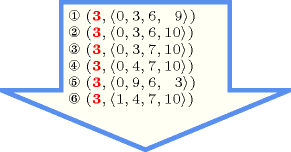
- Typical
- Symmetries
can be decreased to any value .
Items of are permutable.
Two distinct values of can be swapped.
One and the same constant can be added to the attribute of all items of .
- Arg. properties
Contractible wrt. .
- Usage
The constraint was initially created for handling frequency allocation problems. In [ArtiouchineBaptiste05] it is used for scheduling tasks that all have the same fixed duration in the context of air traffic management in the terminal radar control area of airports.
- Remark
The constraint can be modelled as a set of tasks that should not overlap. For each variable of the collection we create a task where and respectively correspond to the origin and the duration of .
Some solvers use in a pre-processing phase, while stating constraints of the form (where and are domain variables and is a constant), an algorithm for automatically extracting large cliques [BronKerbosch73] from such inequalities in order to state constraints.
- Algorithm
K. Artiouchine and P. Baptiste came up with a cubic time complexity algorithm achieving bound-consistency in [ArtiouchineBaptiste05], [ArtiouchineBaptiste07] based on the adaptation of a feasibility test algorithm from M.R. Garey et al. [GareyJohnsonSimonsTarjan81]. Later on, C.-G. Quimper et al., proposed a quadratic algorithm achieving the same level of consistency in [QuimperOrtizPesant06].
- Counting
-
Length () 2 3 4 5 6 7 8 Solutions 8 24 120 720 5040 40320 362880 Number of solutions for : domains
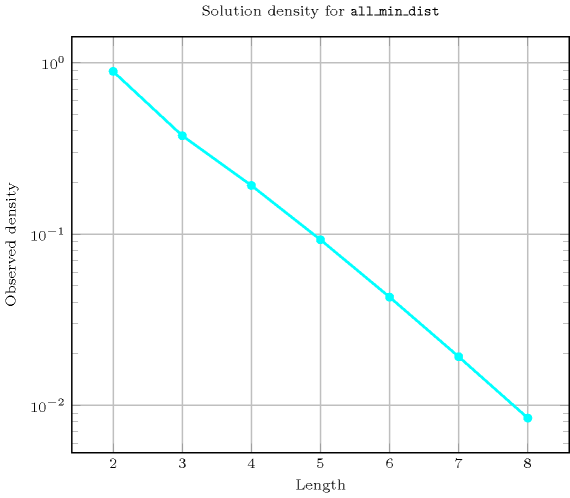
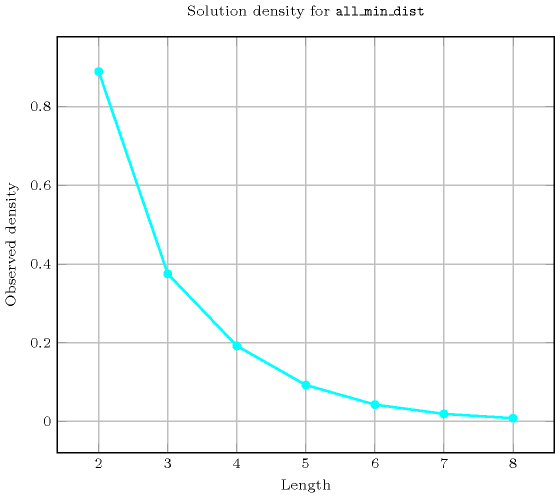
Length () 2 3 4 5 6 7 8 Total 8 24 120 720 5040 40320 362880 Parameter value 1 6 24 120 720 5040 40320 362880 2 2 - - - - - - Solution count for : domains
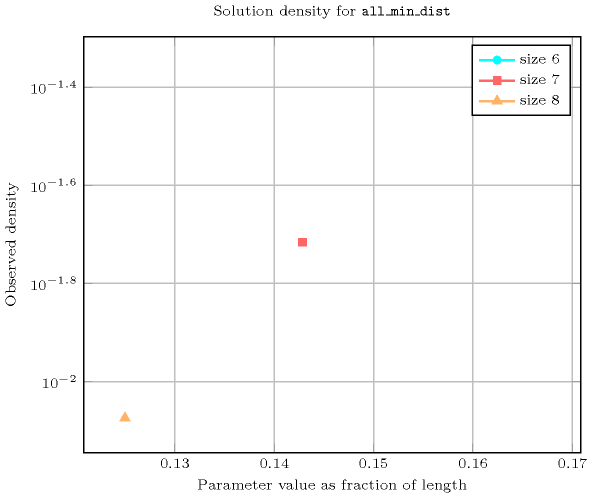
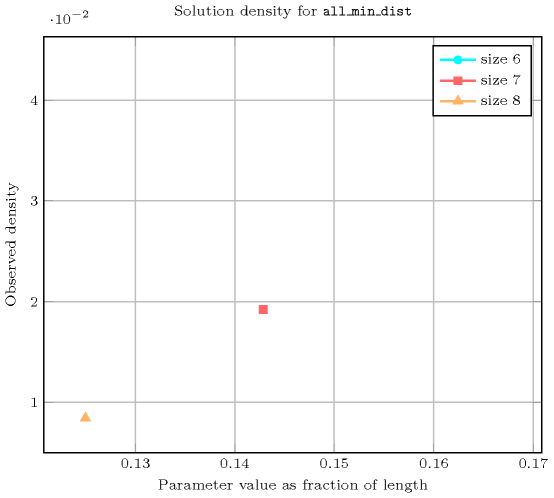
- See also
generalisation: (, of same length, replaced by orthotope), (, of same length, replaced by ), ( parameter introduced to specify capacity 1).
implies: , .
related: .
specialisation: (, of same length, replaced by ).
- Keywords
application area: frequency allocation problem, air traffic management.
characteristic of a constraint: sort based reformulation.
constraint type: value constraint, decomposition, scheduling constraint.
- Cond. implications
- Arc input(s)
- Arc generator
-
- Arc arity
- Arc constraint(s)
- Graph property(ies)
-
- Graph class
-
- Graph model
We generate a clique with a minimum distance constraint between each pair of distinct vertices and state that the number of arcs of the final graph should be equal to the number of arcs of the initial graph.
Parts (A) and (B) of Figure 5.11.2 respectively show the initial and final graph associated with the Example slot. The constraint holds since all the arcs of the initial graph belong to the final graph: all the minimum distance constraints are satisfied.
Figure 5.11.2. Initial and final graph of the constraint
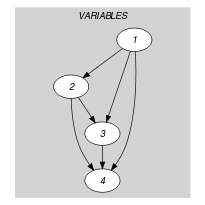
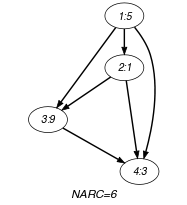
(a) (b)